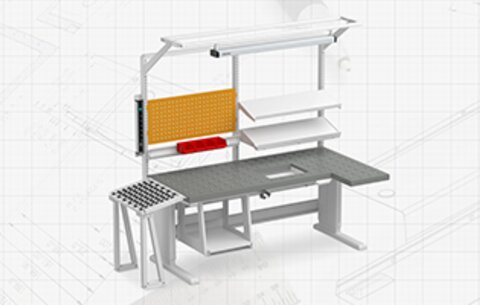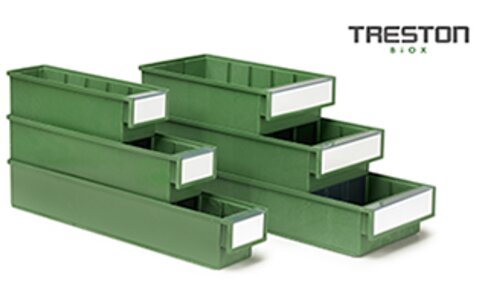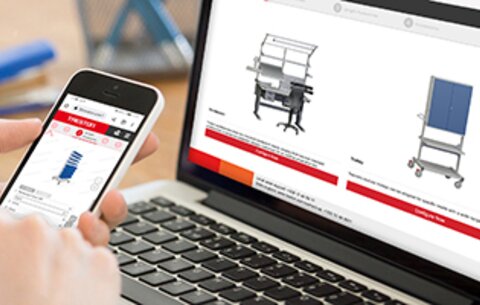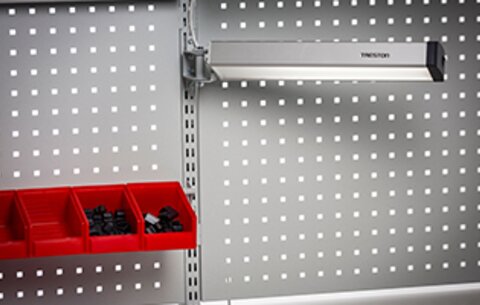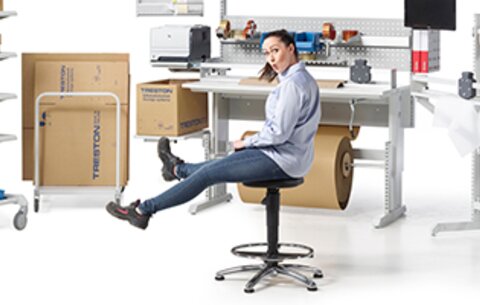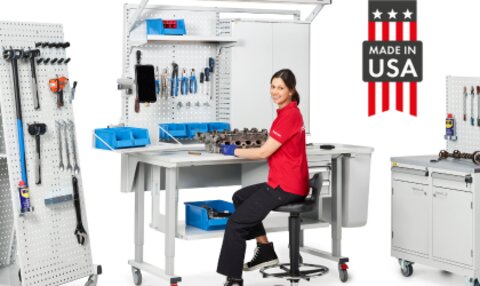

HOW TO: Measure ESD Control

Carissa Harris
When manufacturing electronic equipment, it is important to regularly and correctly measure your ESD control. Below are a few essential tips for measuring all components of your ESD workstation.
Tabletops and working surfaces

When measuring your ESD control on your work surface, place your probes on the tabletop, spaced a minimum of 25 cm apart, and at least 5 cm from the edge of the top.
Your point-to-point resistance should be < 1x10⁹ Ω

Shelves and table:
Place one probe on the work surface, and one probe on the shelf.
Your point-to-point resistance should be < 1x10⁹ Ω

ESD Floor and Table:
Place one probe on the work surface, and one probe on the ESD floor.
Your point-to-point resistance should be < 1x10⁹ Ω

Common Point Ground:
Place probe on the tabletop and measure the system’s total resistance between the tabletop and the common point ground using a measuring lead.

Carts:
Place one probe on the cart’s shelf, and one probe on a metal plate under the cart’s ESD caster.
Your point-to-point resistance should be < 1x10⁹ Ω

You can also measure between two shelves on the cart.

You can also measure between the cart shelf and CPG by placing a probe on a shelf and measuring via a lead to the CPG.

For best results, ensure cart casters have been cleaned with ESD detergent.

Chairs:
Place one probe on the seat of the chair, and one probe on a metal plate under one of the chair’s wheels.
Your point-to-point resistance should be < 1x10⁹ Ω (with upcoming standard < 1x1010 Ω)
For best results, ensure chair wheels have been cleaned with ESD detergent.

Additional notes when testing:
- Relative air humidity will affect resistance levels.
- Dirt in between measured surfaces (incl. probes) will affect resistance levels.
- Commonly used detergents contain a wax component. Wax will create an insulative layer on surfaces like tabletop and floor. Use ESD -compatible detergent.
- Insulators must be measured by a field meter. IEC 61340-5-1 defines allowed values/distances. As a rule of thumb -> 5000 V / m.
- For more information on properly cleaning ESD workspaces, read our cleaning instructions.
Create Your ESD Workspace with Treston Today
Whether you need workbenches, chairs, carts, or accessories, our ESD workspace catalog has many options for you to choose from and order for your workplace. If you need to visualise your next purchase use our online 3D Workstation Design Tool to get started. You can also contact the Treston team directly to ask any questions or begin requesting a quote. We're equipped and ready to assist you!
Want to learn more? Download our ESD White Paper!
A Comprehensive Guide to Measuring ESD

